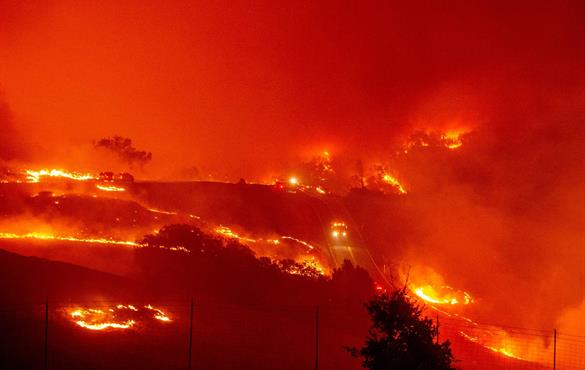In the media: A Forecast for a Warming World: Learn to Live With Fire
Climate change will lead to more wildfires nationwide as hotter temperatures dry out plants, making them easier to ignite

>> Read the full article in The New York Times
SAN FRANCISCO — Facing down 600 wildfires in the past three days alone, emergency workers rushed to evacuate tens of thousands of people in Southern California on Thursday as a state utility said one of its major transmission lines broke near the source of the out-of-control Kincade blaze in Northern California.
The Kincade fire, the largest this week, tore through steep canyons in the wine country of northern Sonoma County, racing across 16,000 acres within hours of igniting. Wind gusts pushed the fire through forests like blow torches, leaving firefighters with little opportunity to stop or slow down the walls of flames tromping across wild lands and across highways overnight.
And north of Los Angeles, 50,000 people were evacuated as strong winds swept fires into the canyons of Santa Clarita, threatening many homes.
All this is happening after three straight years of record-breaking fires that researchers say are likely to continue in a warming world and which raise an important question: How to live in an ecosystem that is primed to burn?
Earlier this year NOAA and NASA launched a mission to learn more about wildfire smoke. The program flew planes into western wildfires and Midwestern agricultural fires throughout the summer and into the fall.
A lot of wildfire and climate research is divided into two camps: observational modelers (who run large computer simulations) and researchers (who gather observational data using sophisticated monitors) said Rajan Chakrabarty, an assistant professor at the Washington University in St. Louis. The goal of the mission was to bridge that gap.
>> Read the full article in The New York Times




